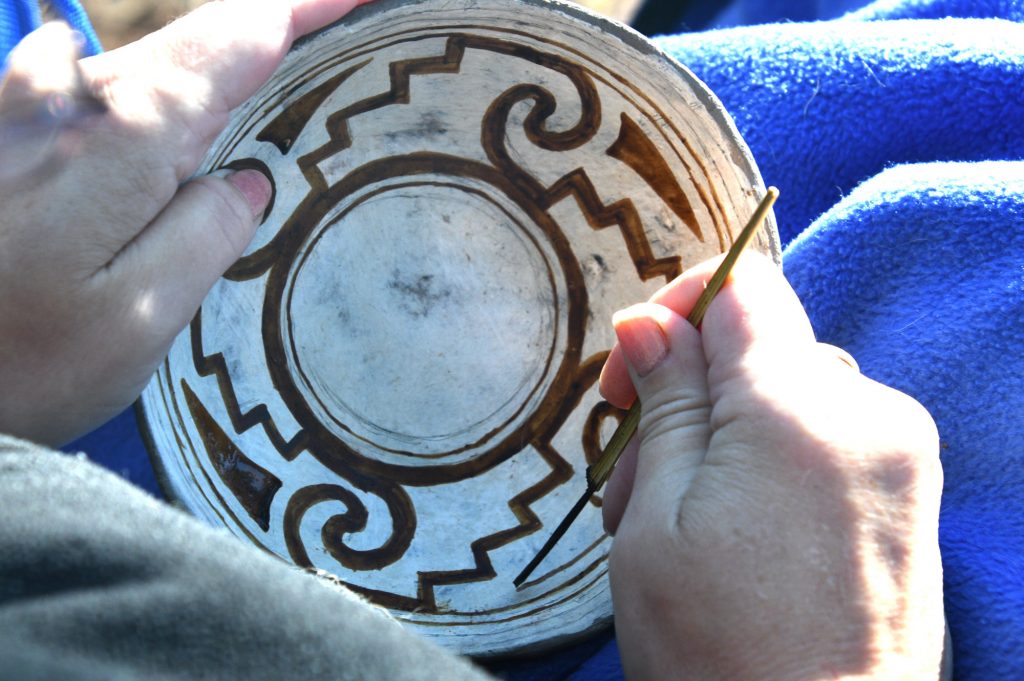My Annual Pot Party!
Mudslinging with pyromaniacs–the highlight of my year!
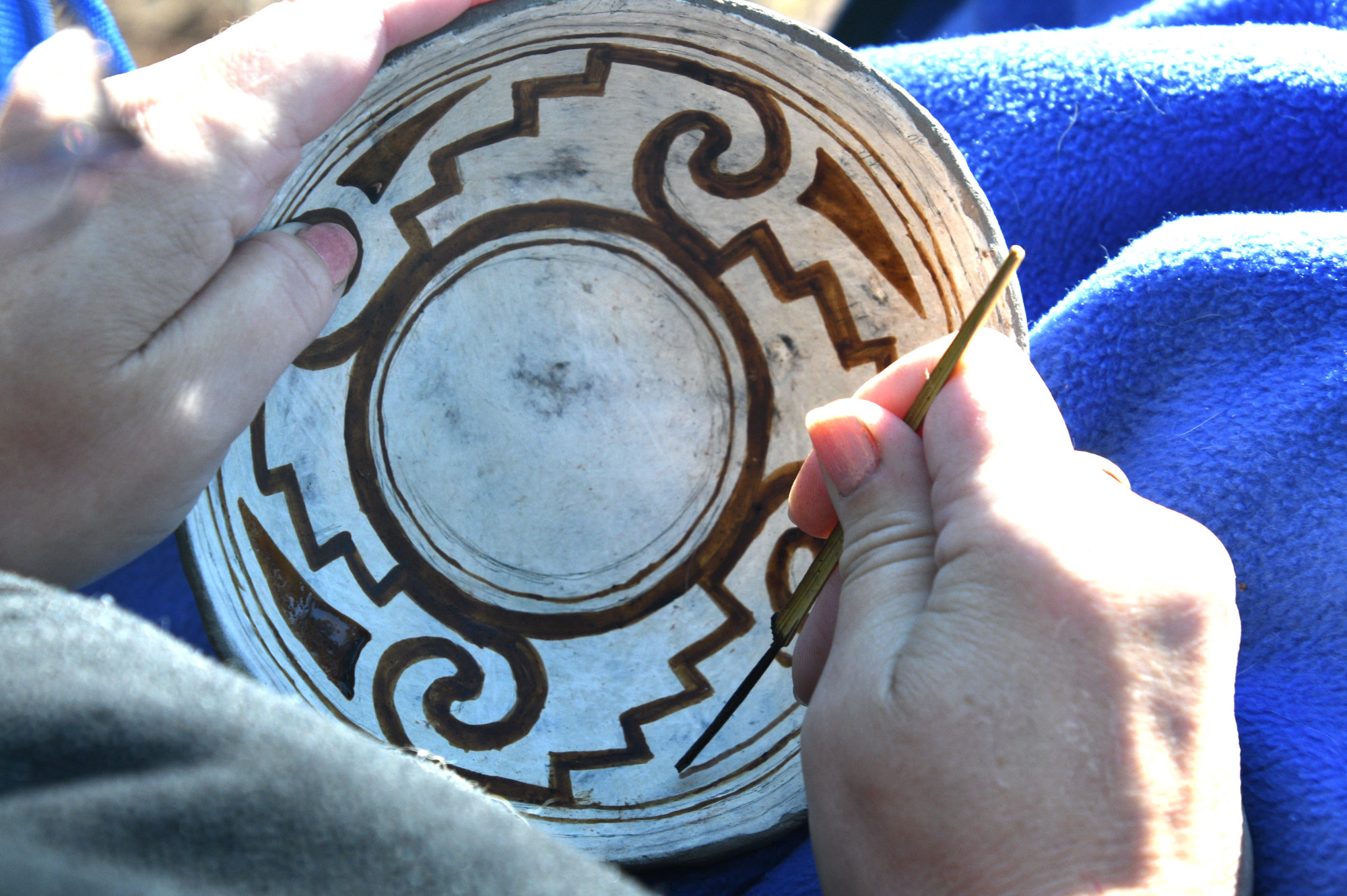
Painting a polychrome pot using Rocky Mountain beeplant and a yucca brush.
Photo courtesy of Larry Galbiati.
For the past six years, the Southwest Kiln Conference has been a highlight of my year–what better than to get together with a bunch of other borderline pyromaniacs and play in the mud?
This year’s conference was held in and above Globe, Arizona. “Above,” because even though our campsite was only about 25 miles north of Globe, it was also about 2500 feet higher. (Guess who only checked the weather in Globe? I about froze!)
Admittedly, it’s a pretty spectacular 25 miles as you wind down from high ponderosa forest into stands of mixed deciduous trees, to open juniper savannah and finally down to agaves with leaves as tall as man and the occasional palm or saguaro.
Friday was the customary chance to catch up with friends not seen since the previous conference, and a series of talks followed by open-air pottery demos at Besh Ba Gowah, a remarkably well-preserved Salado-period pueblo ruin.
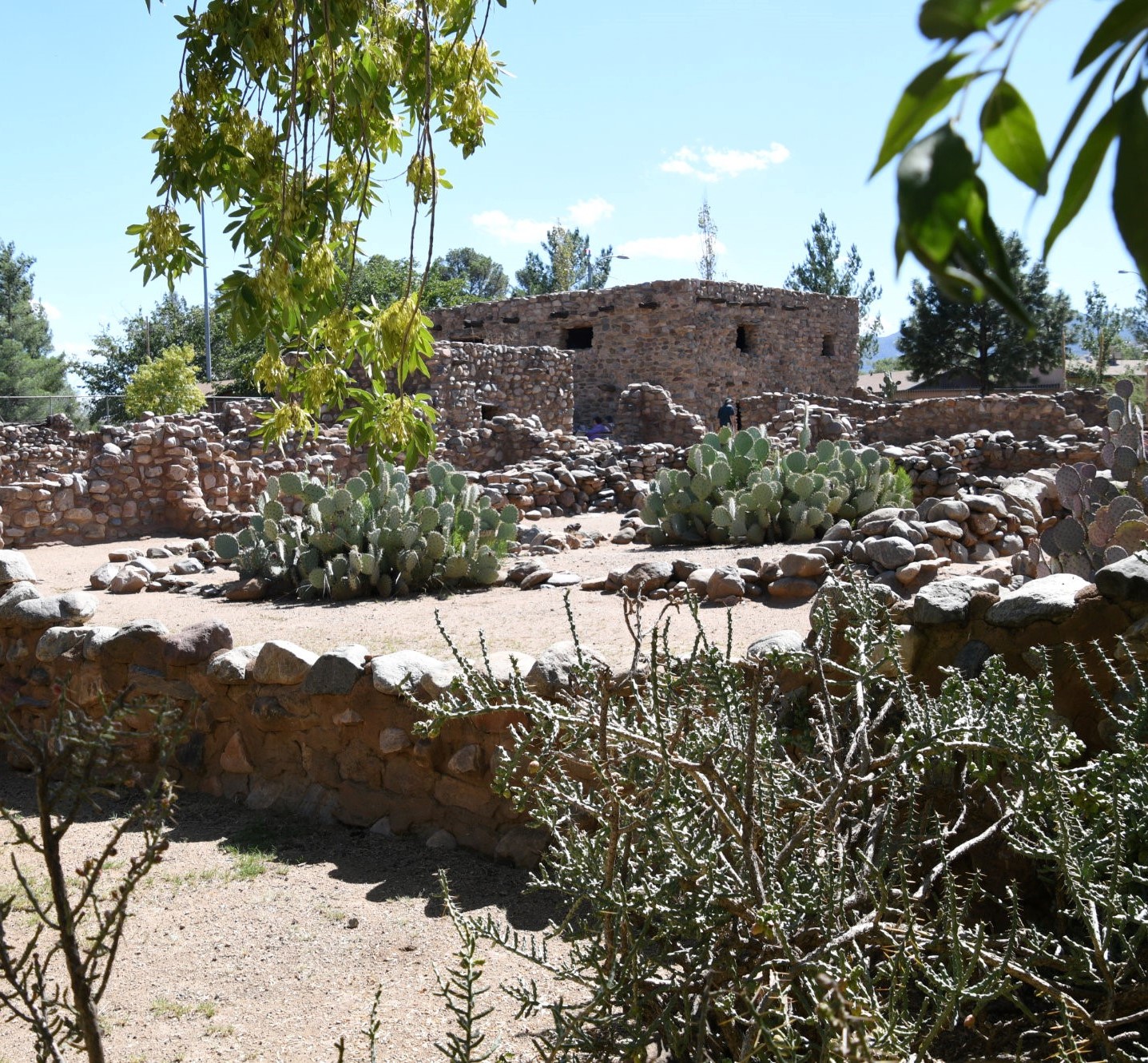
Besh Ba Gowah.
Photo courtesy of Larry Galbiati.
One of our planned demonstrators was unable to make it, and so a few of us pitched in at the last minute. I had started my first attempt at a polychrome pot, and just for fun I based the design on the one that Andy Ward, this year’s conference organizer, selected for our T-shirt logo. (The logo differs from year to year, based on where the conference is held.)
My pot was still only about leather hard when it was time to leave for the conference, so I popped it into a Tupperware container and wedged it under the front seat of the car. Unfortunately, at some point in the 300 miles between Farmington and Globe, it shifted up against one side of the container, and wound up with a slightly off-kilter look. Fortunately, the pot had set up just enough to be dry enough to burnish by the time the demos rolled around.
“Burnishing” is the way in which ancient southwestern pots were polished, using a smooth rock and plenty of elbow grease. Clay particles, unlike sand and gravel, consist of little flat plates. If you can catch it at just the right degree of dryness, the pressure from the stone
flattens all the little plates so they reflect the light back toward the viewer. Too wet, and the clay just sticks to the stone. Too dry, and the stone just scratches away the surface.
Burnishing is a remakably relaxing, zen experience, and even a small pot can take hours.
The warm and slightly breezy weather in Globe meant that my clay dried remarkably quickly, and it was a challenge to get it all burnished before it got too dry. During the demo I had the pleasure of just sitting there burnishing, answering the occasional question and eavesdropping on Cherylene Caver as she gave another impromptu demonstration on corrugated pottery. Cherylene is a wonder, and has developed a personal, multi-factor typological system for identifying corrugation techniques (and she can do them all!) I hope that we can convince her to share it with us at the next conference!
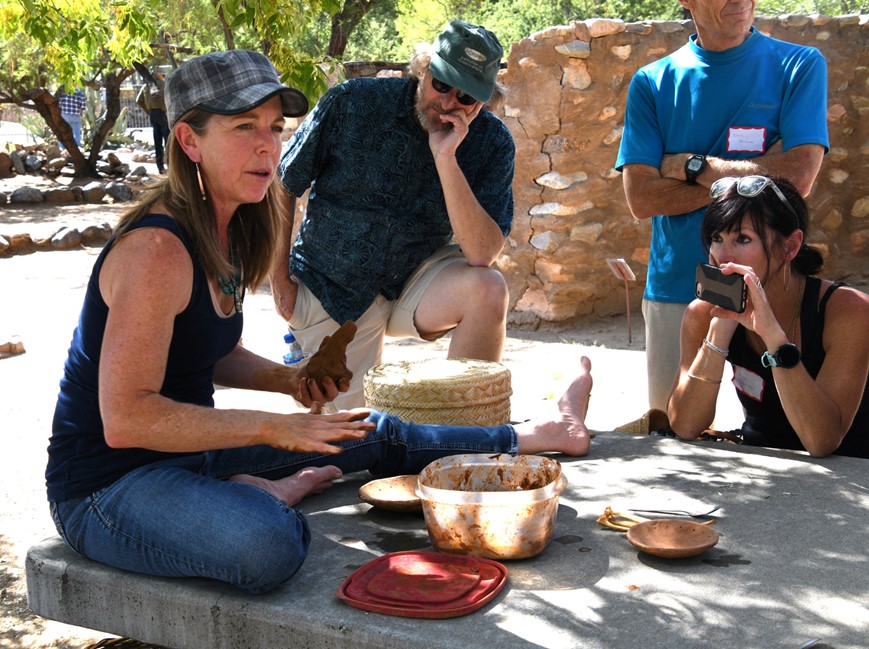
Cherylene Caver demonstrates corrugated pottery techniques.
Photo courtesy of Larry Galbiati.
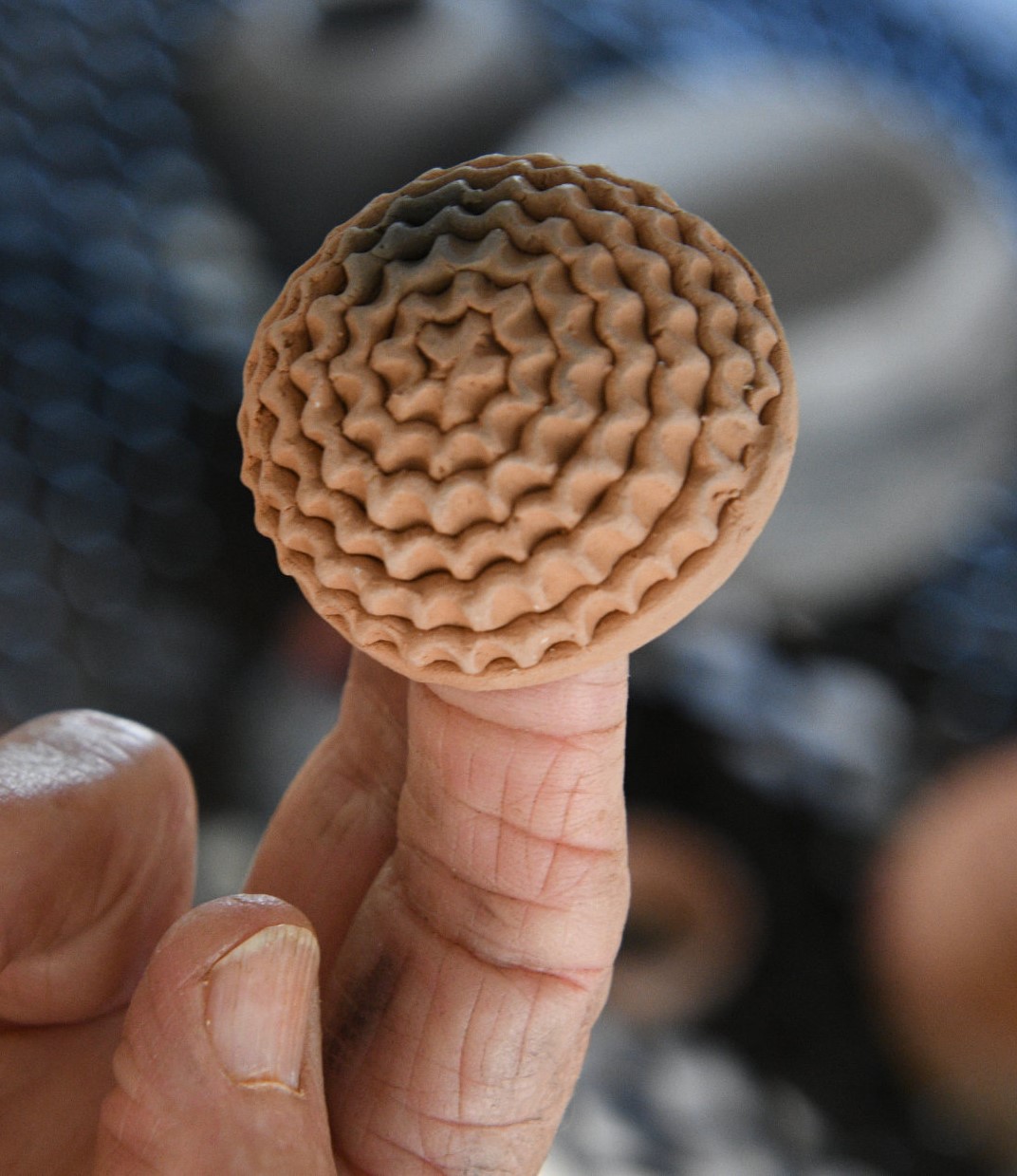
Incredibly minute corrugated pot.
(If you know the artist, please let me know in the comments!) Photo courtesy of Larry Galbiati.
Corrugated pottery was the Tupperware of the prehistoric world–everybody had it, and it was used all the time for pretty much everything–cooking, storage, hauling water, etc.
Although really good corrugation takes a great deal of skill and patience, corrugated wares are almost universally locally made, dull grey or brown, and often blackened by cooking fires. Such locally-made wares are not useful for archaeologists studying trading patterns of ancient people, and since they are neither aesthetically nor academically attractive, they tend to be somewhat overlooked by archaeologists. Since most archaeologists are not also potters, many of the intricacies of these unobtrusive wares may escape them, and in other cases they conclusions they draw about the manufacturing techniques may be just plain wrong.
Saturday morning I hauled myself out of my sleeping bag before first light, in order to be able to start painting my freshly-burnished polychrome bowl as soon as it was light enough to see, in a mad rush to get it done in time for the firing.
The black paint was boiled-down Rocky Mountain Beeplant, and the brush was a piece of narrow-leaf yucca, with the green flesh of the leaf stripped away to expose the fibres that run down its length. I managed to finish the painting just barely in time!
I also had a two black-on-white pots for the trench firing. Unfortunately, they both wound up being in a corner of the kiln that was exposed to the prevailing wind, and they turned out rather grey-on-grey than black-on-white. (Note to self: next year, make sure that my pots are strewn around different places in the kiln!)
My polychrome pot required a different firing regime—although the interior is black-on-white, the exterior of the pot was slipped with “Recapture Red” clay collected during last year’s conference. If it had been fired in the trench kiln with the black-on-white pottery, the absence of oxygen would have resulted in the outside turning black as well, So I turned my precious polychrome over to Andy Ward, kiln boss and polychrome-replicator extraordinaire.
Although the surface firing is every bit as tricky as the trench firing, it is definitely a much speedier process—one of the most agonizing things about trench firing is the anticipation, waiting for the kiln to cool completely before it is opened. This is especially true if you have heard the pop of a pot breaking during the firing, and you are left waiting until the next day to find out which pot.
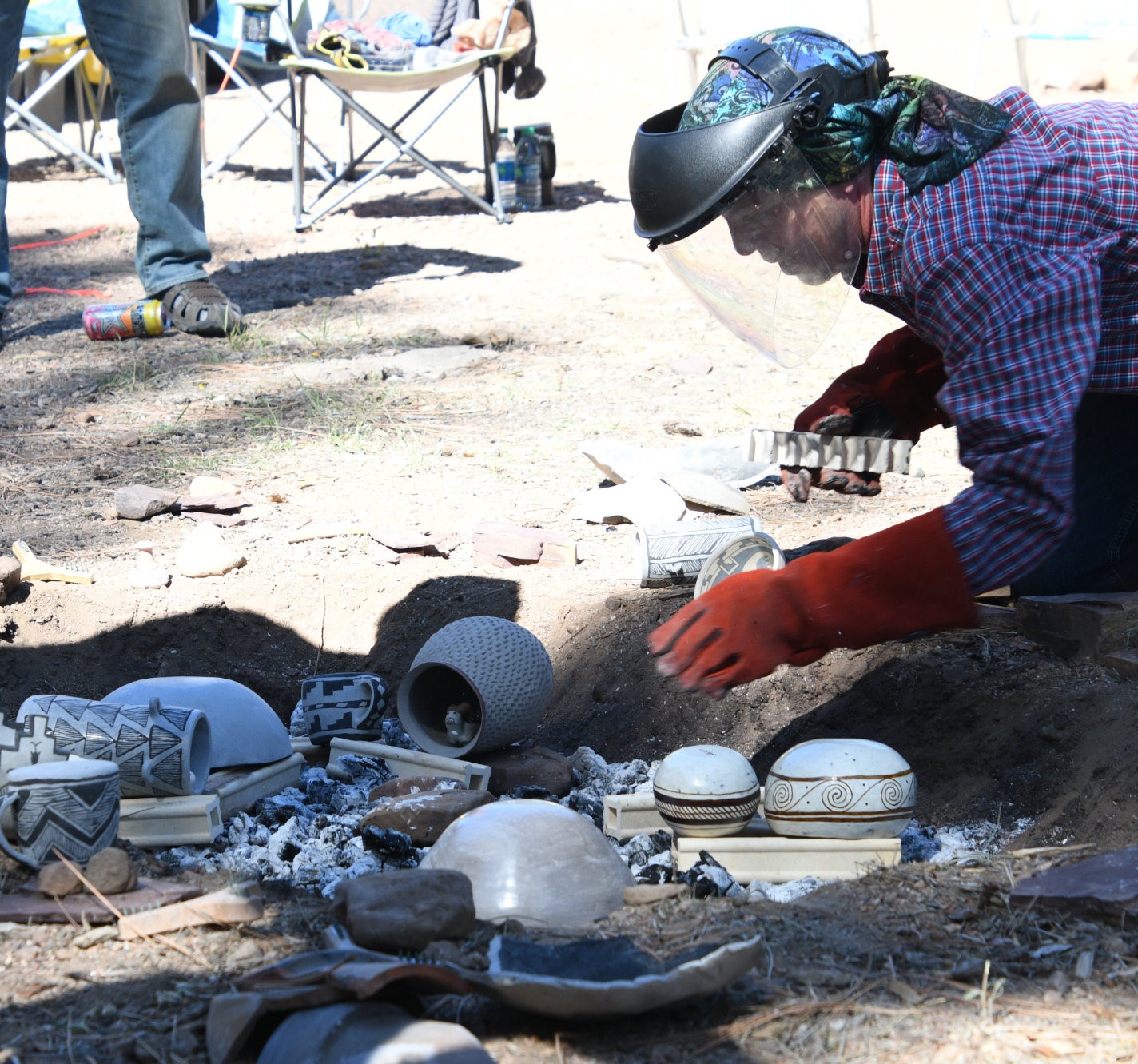
Cherylene setting the kiln. My two pots are under her right glove.
Photo courtesy of Larry Galbiati.
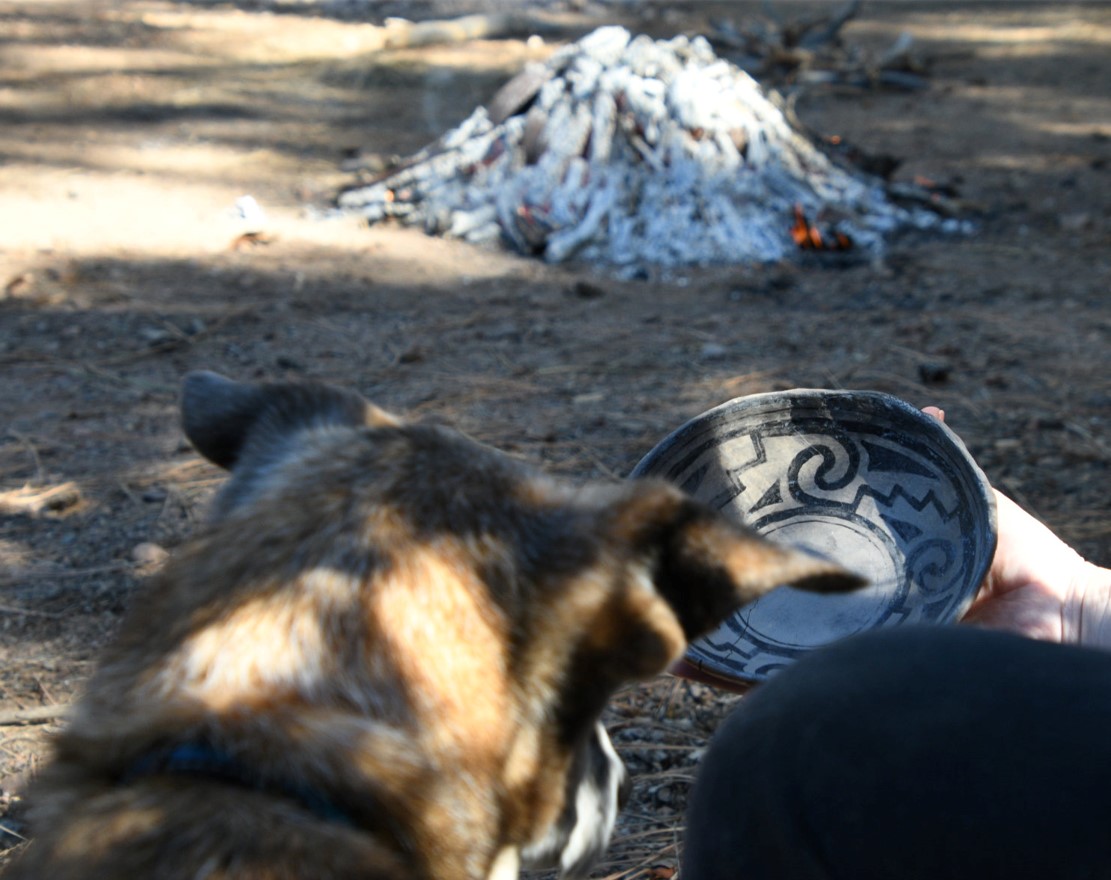
A distinct disappointment.
Photo courtesy of Larry Galbiati.
As I had expected, my little polychrome pot had developed a crack—I had seen the little hairline developing as I painted it, and it may have been a consequence of the malformation that happened during the car ride. All in all, I was pleased with the result—Andy said that the creamy tones of the “whites” are typical of the results in an oxidation (surface) firing.
Some of my fellow conference attendees kindly declared that the fracture made the pot look “more archaeological.” Kayenta, however, was quite disappointed…from her perspective, the whole point of bowls is to contain dog food, and this one clearly flunked.
(If this blog has intrigued you, check out the photos and videos from this year’s conference!)
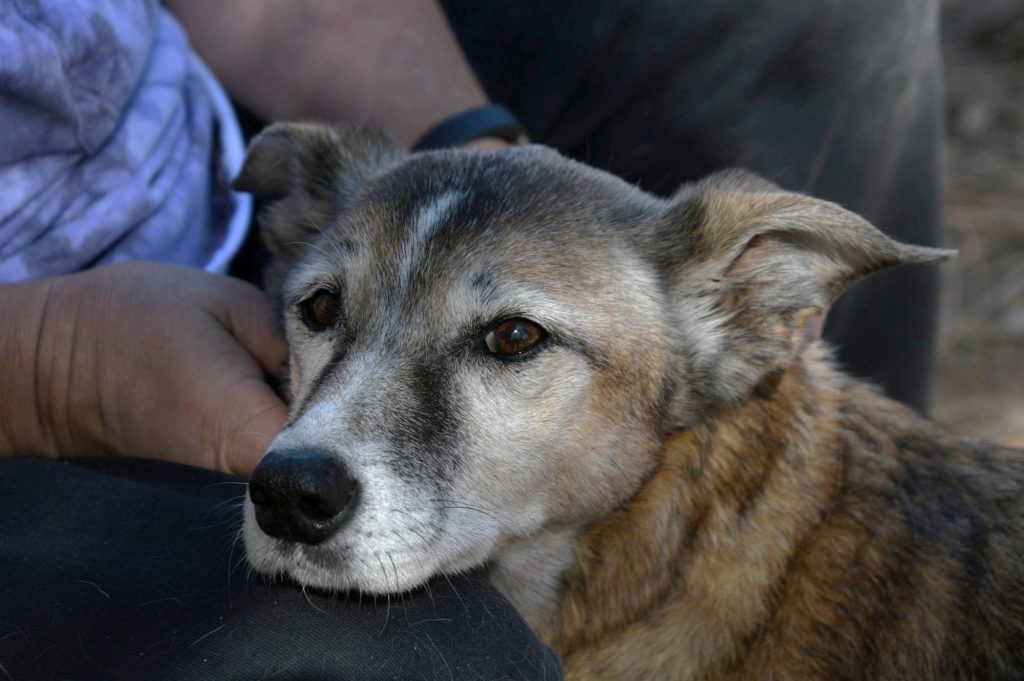
Photo courtesy of Larry Galbiati.

